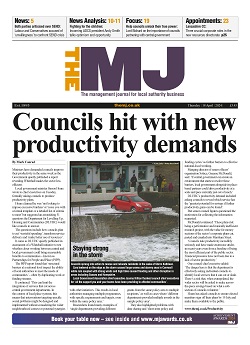In the next few weeks The Mayor of London will decide on the relocation of the Greater London Assembly out of City Hall to The Crystal in Victoria Docks nearly five miles further east, highlighting how COVID-19 could change how local authorities utilise civic buildings.
If the GLA is to relocate, thereby exercising a break clause on the lease, this would potentially save £55m over the next five years. As many will be aware, the GLA owns The Crystal and City Hall was leased at £11.1m a year from St Martins Property Group, a Kuwaiti owned fund. It cost £43m to fund the GLA’s offices in 2002, no doubt the developer will have recouped on its investment.
On such a prominent location, fronting the River Thames, a stones’ throw from London Bridge Station and complementing the More London Development, this symbol of London’s political renaissance will need to find an alternative use and be home to a new tenant.
Finding new takers should be relatively straightforward in a normal market. However, this market is anything but normal. The landlord would typically look to find new tenants from the private sector. However, the private sector is also thinking along the same lines of consolidating and retrenching its assets. My question is what will happen to this grand gesture of civic yet, contemporary piece of architecture?
Its unique shape will make conversion to another use interesting. Making the assumption that residential would be the most challenging, creating more office space would seem more straightforward. However, there is merit in considering transforming the former GLA into a museum and extending London’s cultural spine past Tate Modern at Bankside. Viability for a cultural asset would of course be the first natural question.
What about other UK councils who are in a similar predicament? Many local authorities will not have the option to seek other lodgings to reduce cost. Recent reports show that nearly 150 authorities in the UK are forecasting a combined budget shortfall of at least £3.2bn (source BBC). Some councils may have to issue a Section 114 notice, whereby their expenditure is likely to exceed their resources.
More now than ever, local authorities need to review areas of greatest expenditure and see if they can reduce or save costs. In the wake of COVID-19, the question needs to be asked whether councils require the amount of office space that their employees currently use. Could some of their staff continue to work from home on a more permanent basis and only need to occasionally visit their offices; with the priority being key workers using the offices.
Could properties being leased with break clauses coming up, be handed back to the landlord and if so what will happen to these buildings? Some of the more traditional buildings could lend themselves to being easily converted. For example, Powys County Council, in Welshpool is in the process of converting Neuadd Maldwyn, built in 1927 and one of the largest buildings in its portfolio together with the surrounding grounds, into ‘an extra care’ home for older people
Then there are of course, many councils who have already converted their former offices which are centrally located in towns and city centres into restaurants and bars. Assuming social distancing restrictions will reduce to allow businesses to return to normal, other councils may consider following this business model.
The larger, grander council buildings could continue to serve their original function with the less significant spaces adapted for other uses. For example. Marylebone Town hall has retained its wedding registry service, preserving the grand spaces and leasing other areas to the London Business School. Or maybe bold, enlightened councils seeking to encourage business start-ups in the IT and Creative Industries could consider converting former buildings into innovation hubs.
Heritage buildings, such as the Grade II listed former general post office in Hartlepool easily lend themselves to being re-purposed and extended to form units of various sizes, containing a mixture of office and workshop spaces, perfect for start-up businesses. There may even be the potential to add mix tenure housing. Mixing the uses with varying operational times may increasingly become the norm to ensure the viability of our heritage buildings.
In the immediate future, the government will have to support councils with advance payment and additional funding as the UK’s economy slowly emerges from its COVID-19 enforced slumber. The nation may be coming out of a crisis, and as the old saying goes, there will be opportunities, as we are encouraged to re-think the future of the built environment.
Femi Oresanya is principal at HOK’s London Studio



